A Prostitute's Place

By Richard Milner
Staff Writer
9/11/2019
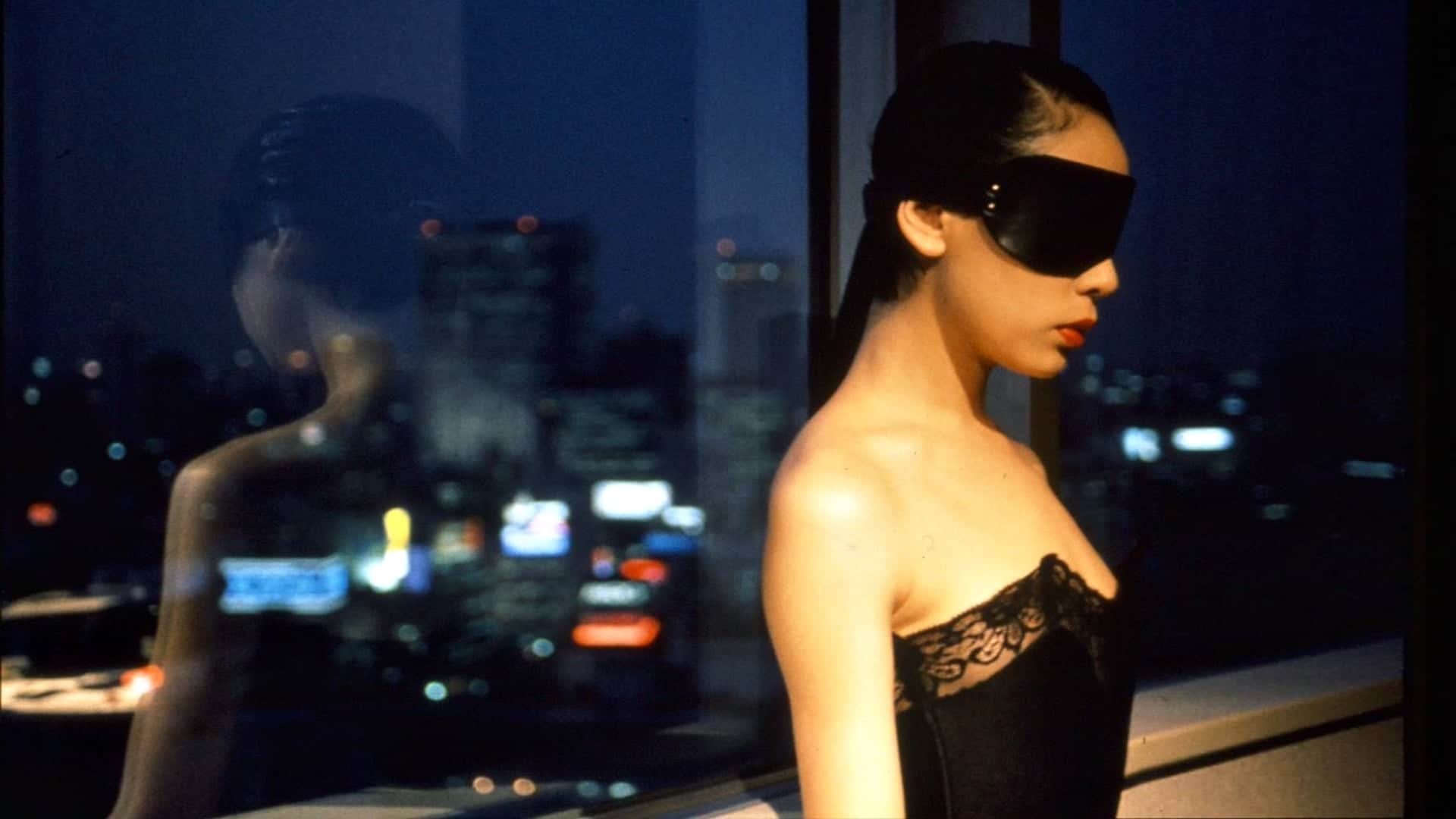
Miho Nikaido plays a prostitute in the 1992 film Tokyo Decadence
Japan has a strange relationship with sex. On the one hand, it’s prurient, on the other, oddly chaste. It’s the Asian hub of porn, and yet at the same time many of its young people seem to have no interest in having sex.
The truth is sex is everywhere in Japan, on the surface and beneath it. Porn lines 7-11 magazine racks, love hotels and strip clubs dot its cities. Establishments in Kabukicho, Tokyo’s red light district, display “menus” of airbrushed girls and guys. “Pink bars,” sometimes more bluntly called “blowjob bars,” offer release for as low as $18.

Signs for hostess clubs and massage parlors in Kabukicho (Picture Credit: shankar s.)
However, many of these places are quite selective when it comes to customers, assiduously vetting them at the door to ensure that the quality of the clientele doesn’t damage the reputation of the business. Japanese-language proficiency is typically required, since a short introductory conversation is sometimes necessary before services commence.
Escorts interview potential clients with the same scrutiny, often meeting in cafes ahead of time (arranged by various agencies) to chat, negotiate, and to let escorts gauge if they’re likely to stalk or murder them. Escorts might not all be sex workers, but their trade is predicated on the same sexual tension that drives people to go to pink bars. Clients, typically wealthy businessmen, might roll up to their escort on date night in a Lamborghini and pay hundreds or even thousands of dollars just to sit and drink with her till morning.
Clients might roll up to their escort on date night in a Lamborghini and pay hundreds or even thousands of dollars just to sit and drink with her till morning.

Japanese girl dressed as a sexy maid
Of course, whatever the case, discrete, and technically legal transactions can be negotiated, because the Prostitution Prevention Law of 1956 only prohibits paid vaginal intercourse with an “unspecific person” (hence the “get to know you” exercise). The vaginal sex definition is quite clear, but the “unspecific person” aspect is vague and allows for legal wiggle room. Thus, the sex industry in Japan includes pink bars, escort services, strip clubs, soaplands (brothels plus spas), sexual massage parlors, and adult shops. It’s hard to find precise figures, but the sex industry is estimated to bring in between $9-22 billion a year, and to employ a quarter of a million people, according to Yoshikazu Nagai, Professor of Sociology at Kansai University, and author of the book Control of Sex Business Operations.
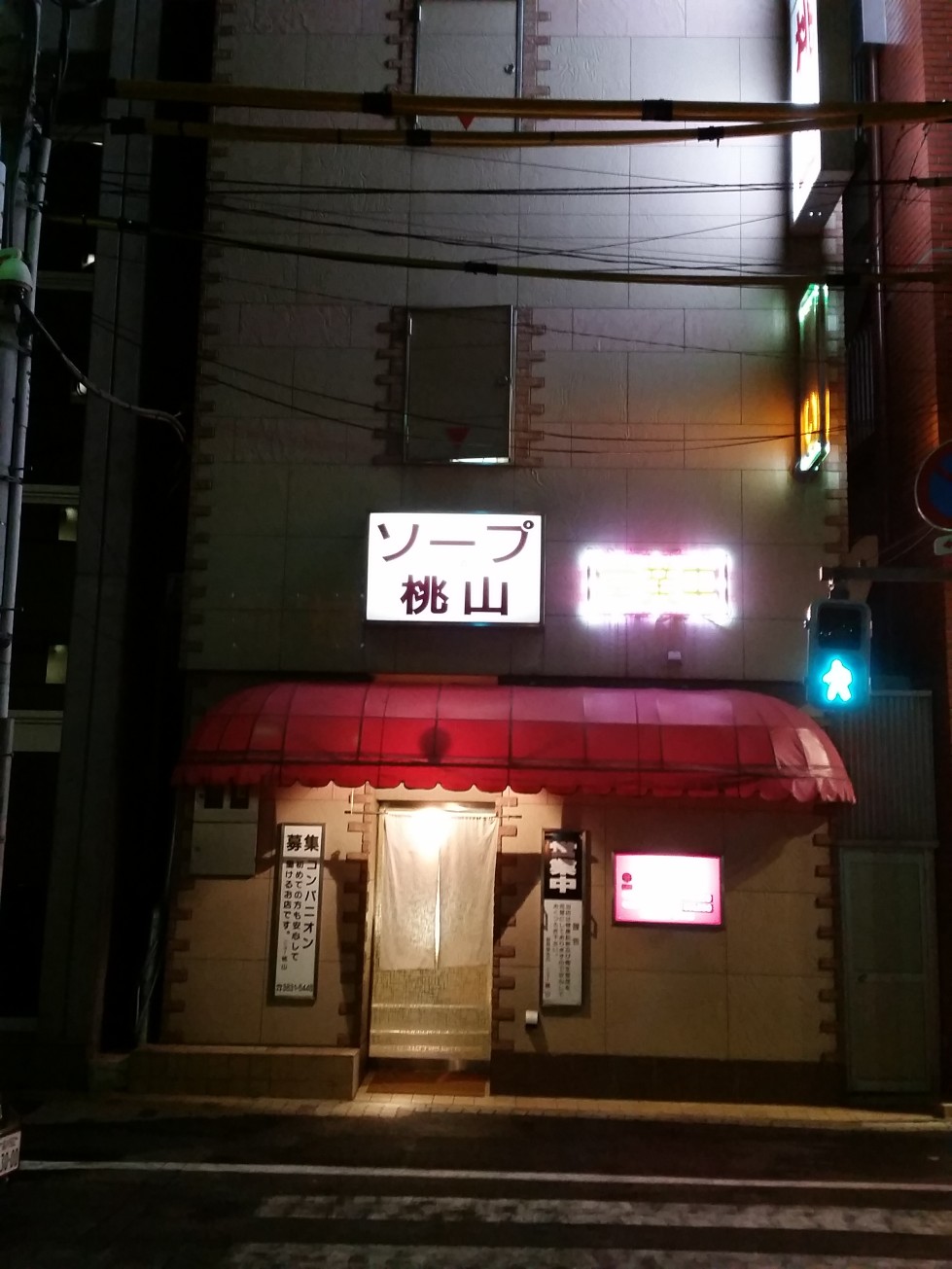
A soapland
Yet, even this is relatively illiberal. Before 1958 (when the 1956 Prostitution Prevention Law came into effect), prostitution was not only completely legal in Japan, it was sanctioned by the government. For the greater part of a millennium, from the Heian period (794-1185) till the Meiji Era (late 1800s), sex in Japan was an art. Poetry as far back as the 10th century, like that of Oe Yukitoki, lauded courtesans and lavished readers with detailed descriptions of their makeup, mannerisms, and ability to make men swoon.
Before and during the Edo period it was practically expected that men would frequent brothels regardless of marital status. Wives were for children and for the administration of a household, concubines, mistresses, and prostitutes were for pleasure. In turn, some prostitutes of Edo (old Tokyo) became as famous as prominent geisha, such that artists produced woodblock prints of them like Edo-era centerfolds.

Oiran (high class prostitute) tying her obi by Katsukawa Shunsho
Of course, life was often hard for a prostitute in ancient Japan. For one, they usually came from poor families, who sold them to brothels at an early age. Though not technically slaves, their work contracts with the brothels never expired, and their only way out was for their contracts to be transferred to a devoted client, who made them their spouse or concubine.
The arrival of Westerners in Japan meant both good and bad news for prostitutes. Westerners, shocked by prostitutes’ slave-like conditions, pressured the Japanese government to change the law during the Meiji Restoration to free them from servitude. Prostitutes could now operate as independent entrepreneurs. In turn, government officials like Ito Hirobumi, who played a key role in changing the law, applauded the women’s efforts, their desire to uphold a long-standing cultural tradition, and their sacrifice to improve their families’ fortunes.
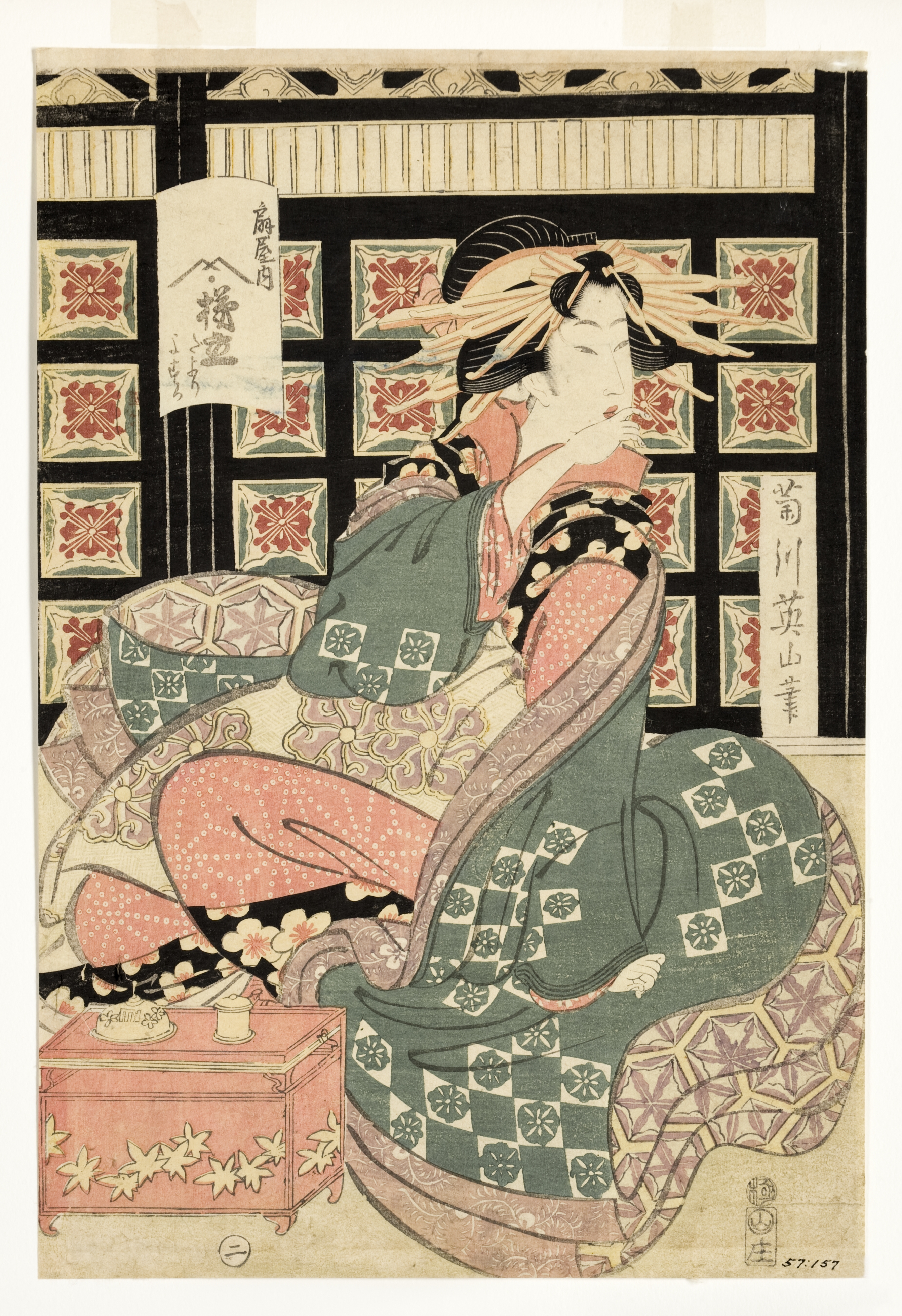
Courtesans of the Ogiya Brothel by Kikukawa Eizan
But when the US occupied Japan after WWII, Judeo-Christian sexual guilt mingled with traditional Japanese values regarding sex. The Women’s Christian Temperance Union lobbied the US government to pressure the Japanese government into eventually restricting prostitution in 1956.
When the US occupied Japan after WWII, Judeo-Christian sexual guilt mingled with traditional Japanese values regarding sex.
Ingrained cultural attitudes didn’t disappear overnight, though. Rather, the result is a mixture of values, resulting in a society with a much more nonchalant attitude towards sex, for whom sex doesn’t carry the same moral baggage it does in the West. The older generations are particularly blasé about sex, with grandfathers offhandedly recounting visits to prostitutes. Today nearly a quarter of polled Japanese women, don’t consider sex to be cheating. In another poll by Ashley Madison, a staggering 84% of married women and 61% of married men said that extramarital relationships were beneficial to their marriages.
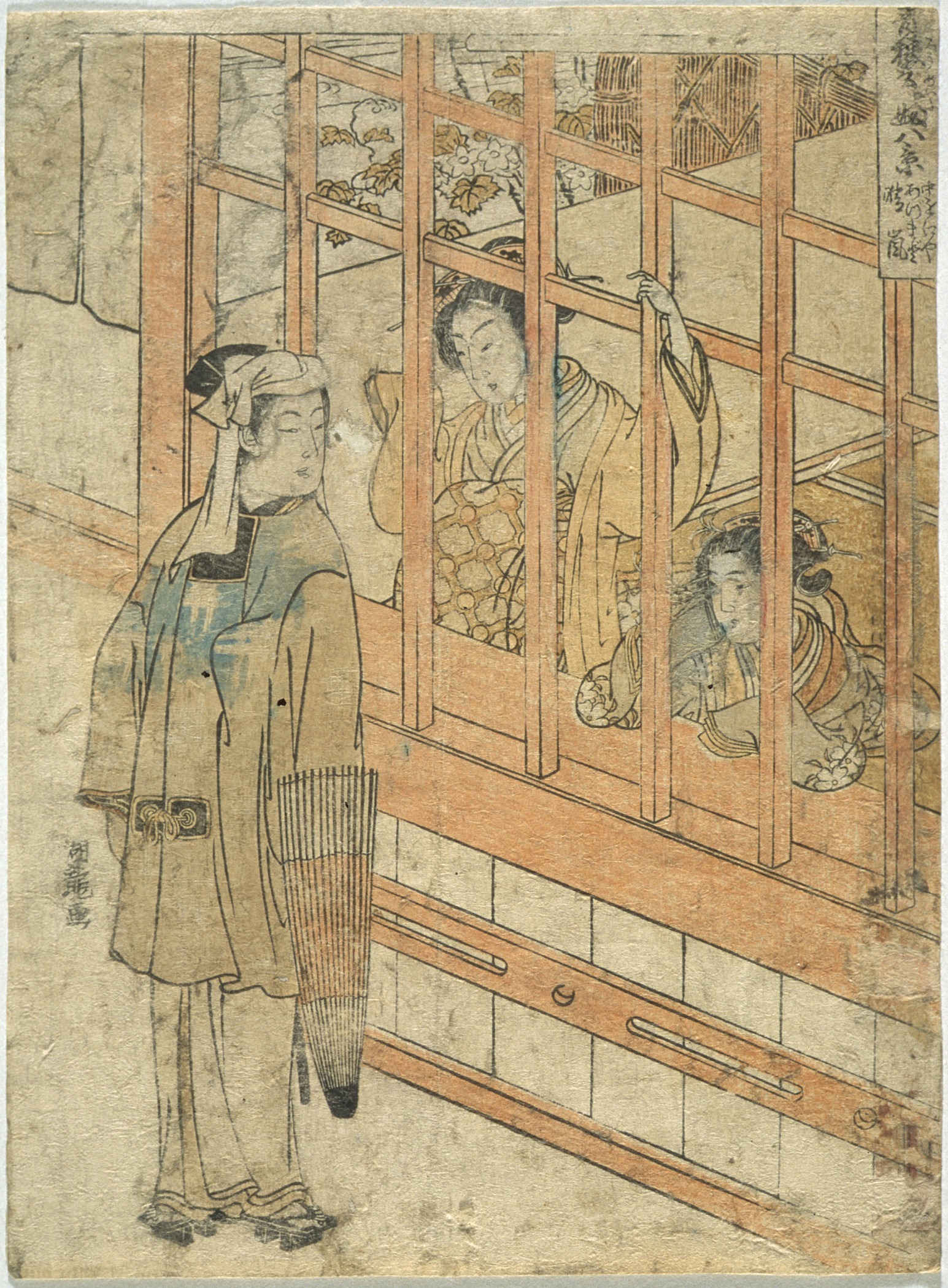
Young Man Outside a Brothel in Yoshiwara by Koryusai
This clemency is reflected in one of the terms used to describe extramarital dalliances: uwaki. Uwaki refers to a one-time fling, like the kind that might be had with a prostitute, and is easily dismissed, not considered a threat to a marriage or family. Furin, on the other hand (a long-term affair) is considered disgraceful and dangerous. The sense of betrayal stems not so much from the sexual act, but from the displaced attention, time, and resources. This is because in Japan, sex and marriage don’t necessarily go hand-in-hand. Commitment is more about providing material stability for the spouse and children than it is about sexual fidelity.
In Japan, sex and marriage don’t necessarily go hand-in-hand.
Japan has a relatively low divorce rate (about 27%, according to the Ministry of Health, Labor, and Welfare) partly because of this startlingly practical attitude towards marriage. Husbands and wives are often more like colleagues than spouses, with each playing a designated role. Whilst attitudes are slowly changing with succeeding generations, this paradigm prevails.
Add to this the fact that many young people find themselves in punishing regimes of mandatory overtime, with little chance to even think about dating, and the role of the sex industry becomes clearer and clearer.
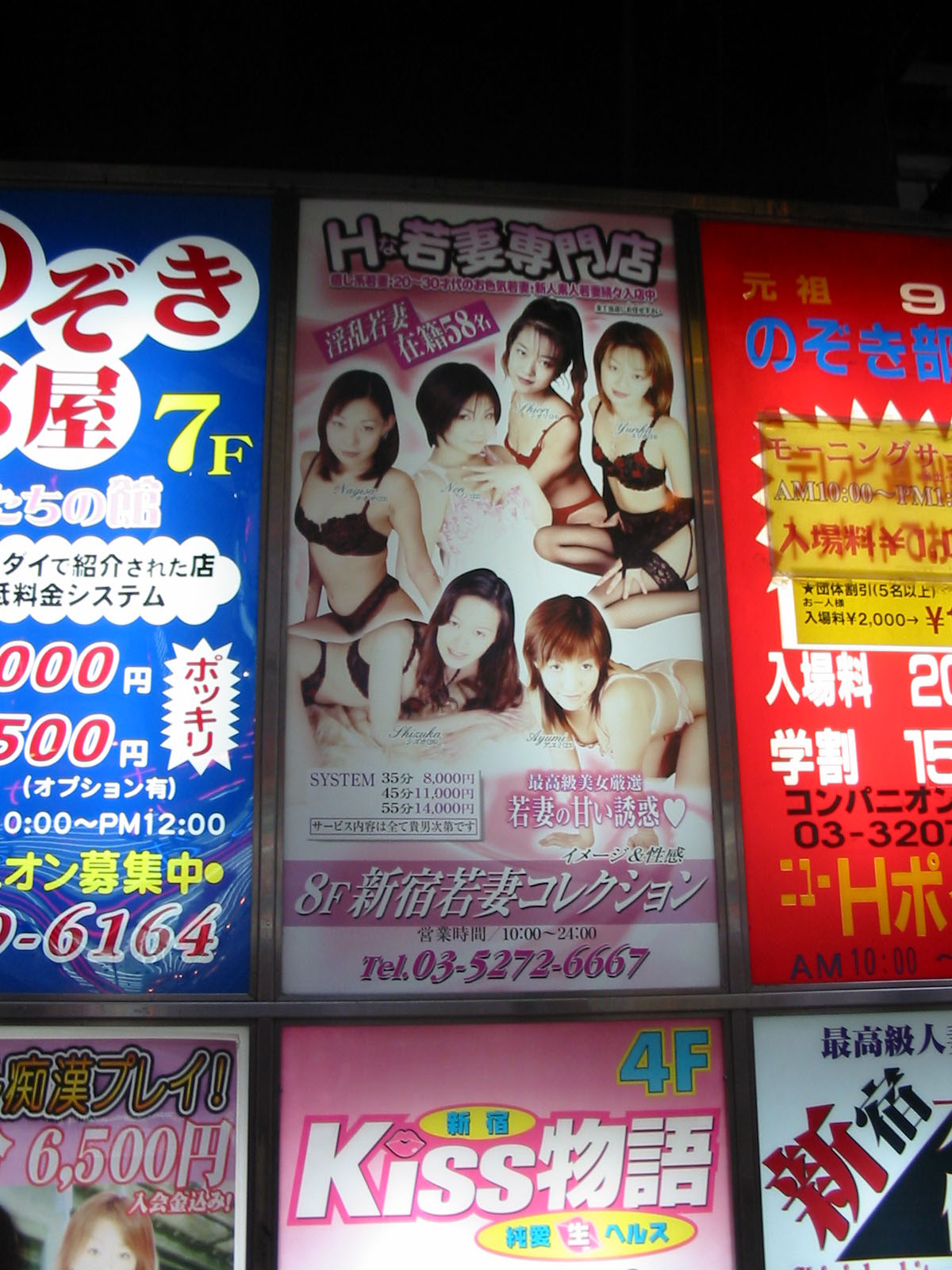
Poster for strip club (Picture Credit: Stephen Harlan)
It’s a real shame, then, that Japanese sex workers today, unlike prostitutes of old, risk judgment from society and ostracism from family for the role they play. The reason for this change of attitudes seems to be the influence of Judeo-Christian morality, and the government’s restriction of prostitution. The legally grey-area prostitution now occupies seems to have turned it morally grey as well, such that many now perceive it as dirty or sinful. In fact, the modern Japanese term for “sex industry,” fuzoku, is most accurately translated as “public morals” – a telling term in a country where social norms determine what’s right and wrong.
And so, despite the more casual Japanese attitude towards sex and prostitution, sex workers still leave establishments with their faces obscured by surgical masks and strategically arranged hair, embodying the complicated position of sex in Japan – something that is at once so present, yet so absent.
